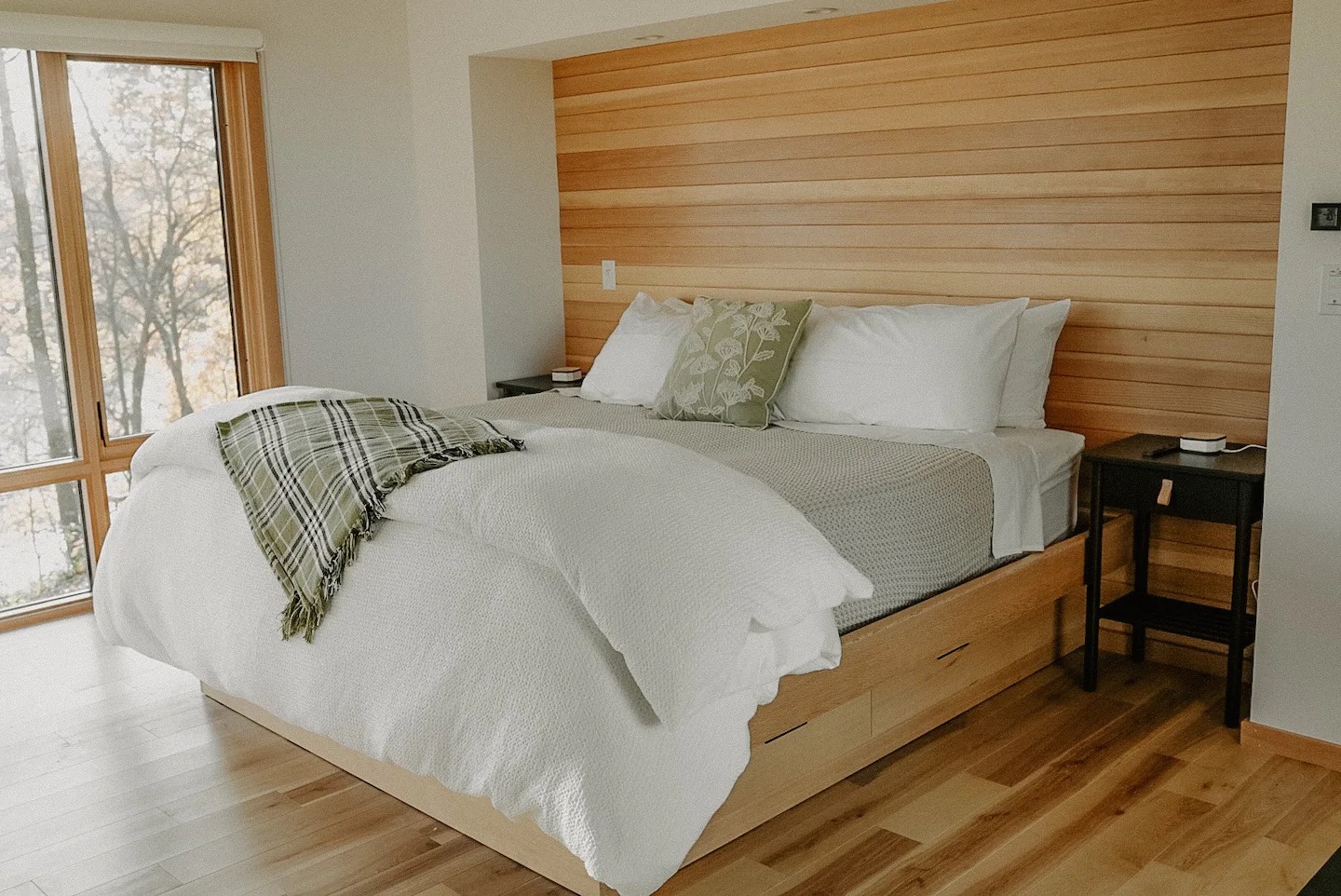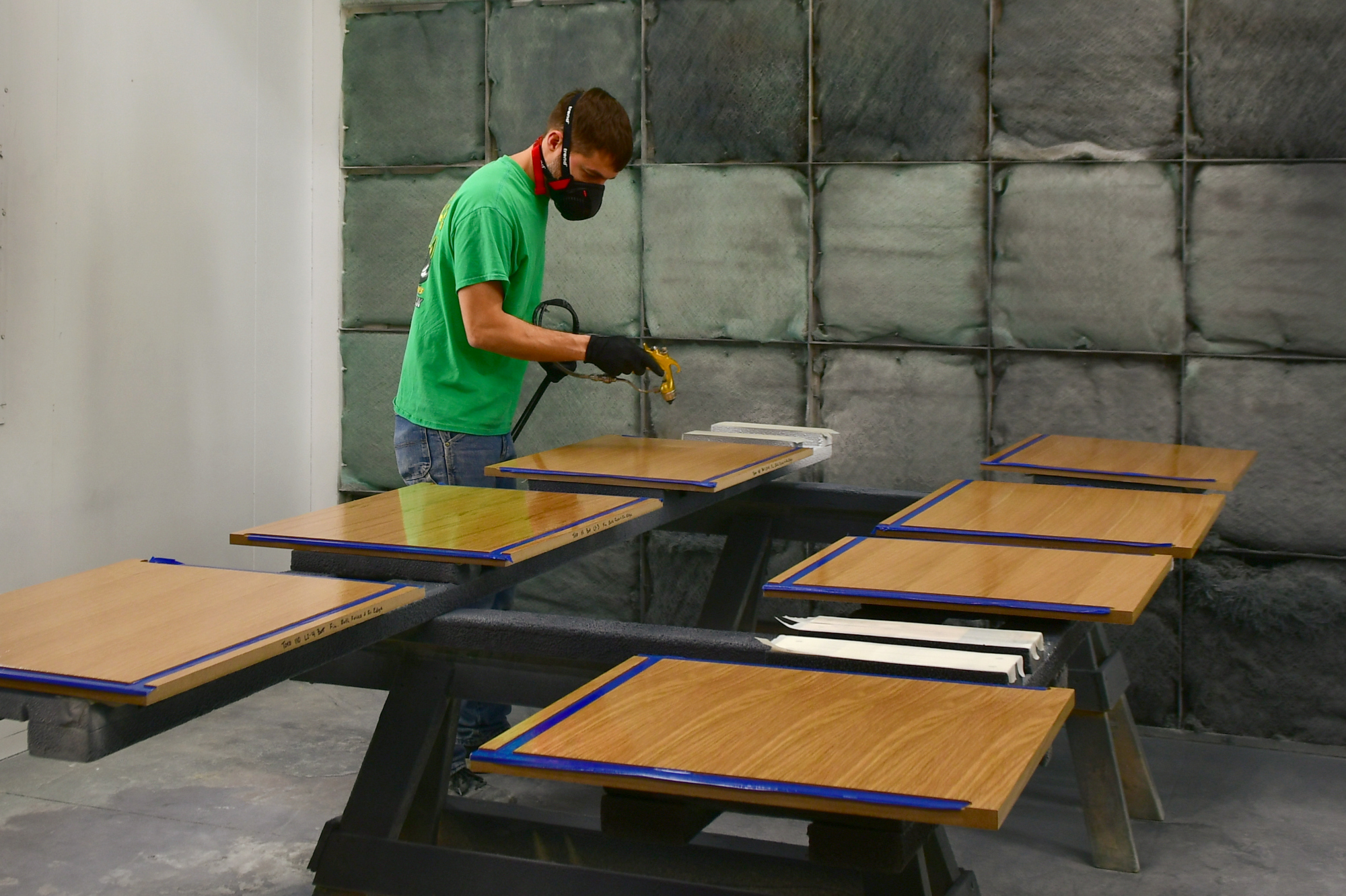What is Avodire?
Avodire is a hardwood that is native to western and central Africa. Its habitat preference is near water including lakes and streams. On average, avodire grows up to 110 feet tall. Its trunk can be 2 to 3 feet wide, and sometimes it reaches 5 feet in diameter. It is non-durable in regards to rot or decay resistance and is susceptible to insect infestations. At 10-30 pounds per cubic foot, avodire is a relatively light hardwood and has an excellent weight-to-hardness ratio.
The heartwood of avodire closely resembles the sapwood and is usually difficult to decipher from the. Considered a “blonde” wood, it is pale yellow or cream to a light tan in color. It is both a plain and fancy wood with grain ranging from straight to wavy or irregular and interlocked. It has a fine texture and is well known for its high natural luster. The plain, straight grain wood is used in plywood and high end joinery while the figured wood is often used in millwork, cabinetry, store fixtures, and furniture.
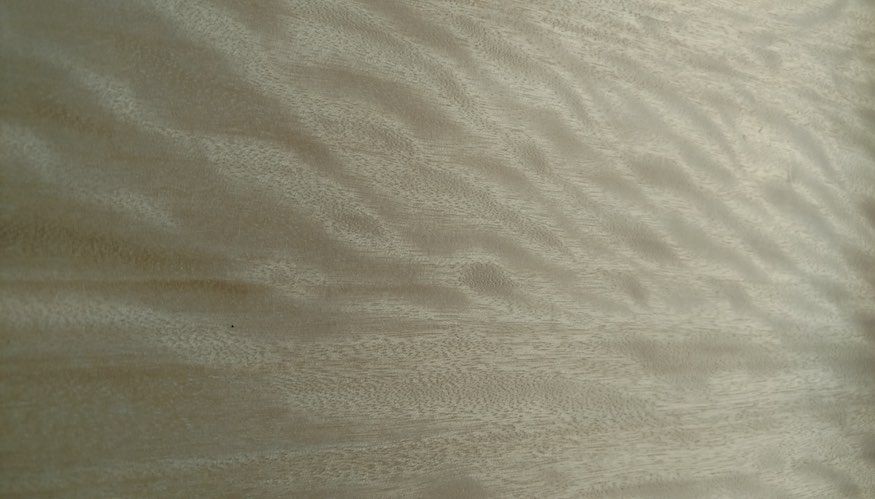
Features
Plain avodire lumber is moderately priced, similar to other African lumbers like mahoganies. However, figured to highly figured grain avodire is much more expensive. It is also commonly sold as veneer at a moderate price. It is a relatively strong and stable hardwood that has an exceptional strength-to-weight ratio.
Avodire has a special, shiny look. It shows a band of light, like in a cat’s-eye gemstone. Its shine is often what makes it popular. It is famous for its barber pole figure and exhibits a range of grain patterns from wavy to mottled or rippled. In veneering, it looks beautiful and elegant. Its veneer is used in paneling and smaller furniture projects. It is also used to make musical instruments.
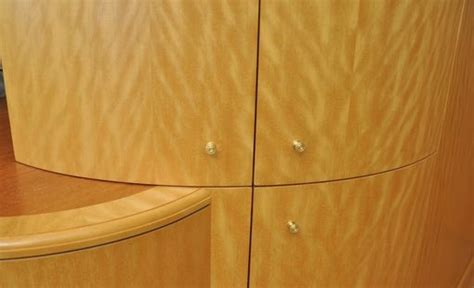

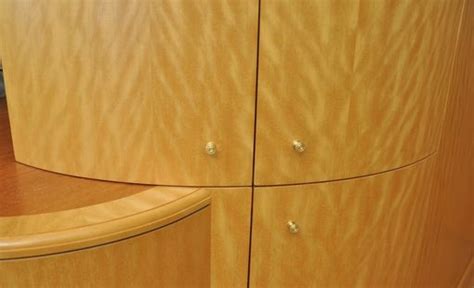


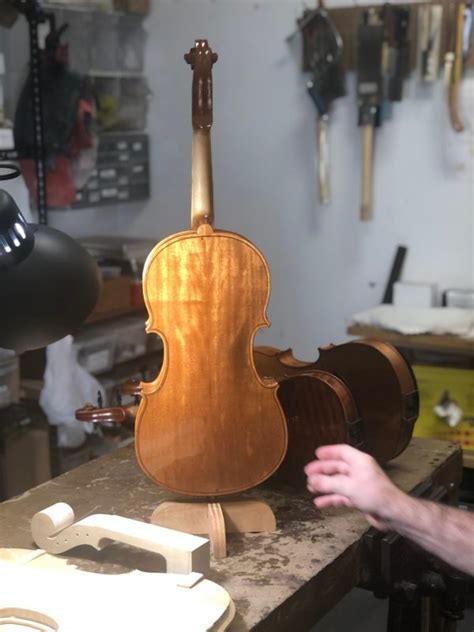

Woodworking Properties
It shares similar woodworking properties with mahogany and is distantly related. It has good working characteristics and is fair to work with both machines and hand tools. However, its interlocked grain is susceptible to tear out in machining and planing, by reducing the cutting angle to avoid tear out. Because of its hardness, it can have a blunting effect on cutting edges, but glues, sands, and finishes well. It will change color when exposed to natural light. To keep its natural color, it needs UV treatment or a cover.


Like the look? Contact us to get started on a custom woodworking project of your own.
